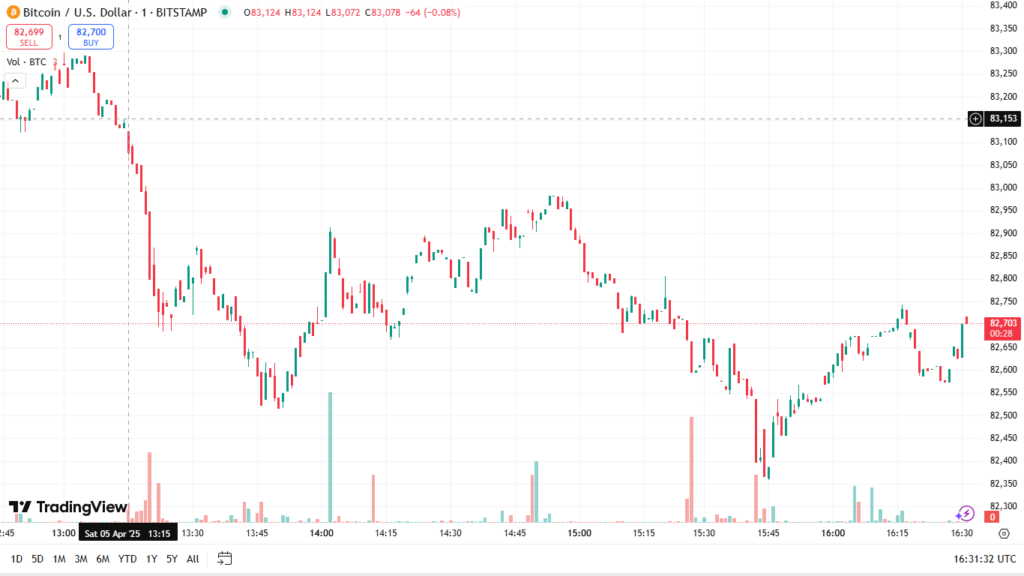The extensive “Liberation Day” tariff policy enacted by Former President Donald Trump generated probably the strongest market downturn in history. The policy, announced on April 2, establishes universal import tax rates at 10% alongside specific nation-related levies. The announced initiative intended to cut the $1.2 trillion U.S. trade deficit but feared the markets. Due to this, it suggested rising costs alongside possible trade responses and supply chain complications.
The S&P 500 experienced a 5% market dip within two days, reducing the index from 4,500 to 4,275 while wiping out $5 trillion from total market value. The market decline exceeded the earlier COVID-related loss of $3.3 trillion, which became the biggest two-day monetary drop in history.
Bitcoin demonstrates market resilience
Bitcoin displayed resistance, whereas other equity markets showed a considerable decline. During that period, its value fell by 1.6% from $86,000 to $84,609. During this period, Bitcoin maintained stability at a 1.6% decline. This stood apart from its traditional pattern of economic shocks aligning with risky asset behavior.

The combination of a static supply and decentralized features makes Bitcoin stand unique in inflation-driven settings. This is according to Marcin Kazmierczak, COO of blockchain oracle firm RedStone. He indicated Bitcoin demonstrates qualities typical of financial hedges that boost its attraction when policy changes lead to market instability.
Institutional demand strengthens BTC’s position
The adoption of Bitcoin by institutions grew steadily after multiple Bitcoin Exchange-Traded Funds (ETFs) became available in 2024. Large investors can now access its markets through these products, allowing them to gain exposure to Bitcoin without dealing with direct ownership. This integration helps traditional portfolios accept Bitcoin assets.
According to James Wo, CEO of DFG. The wider availability of institutional investment in Bitcoin has increased its exposure to macroeconomic changes. Establishing its position as a long-term investment. It will increase in value above $132,000 before the year 2023. Jamie Coutts of Real Vision predicts
When markets adapt to economic policy changes, it establishes it as an effective strategic financial hedge during the current market scenario.







